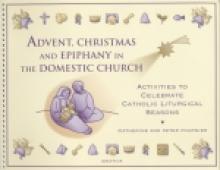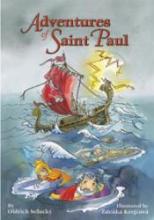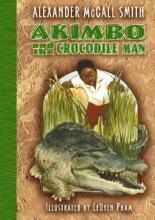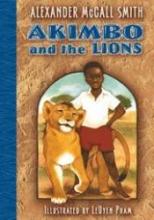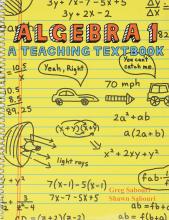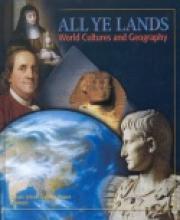No name
Advent Reflections, Come, Lord Jesus!
In Advent Reflections, Come, Lord Jesus! Archbishop Timothy M. Dolan shares four meditations, one for each week of Advent: “The Threes Comings of Jesus,” “St. John the Baptist,” St. Joseph: A Man Forgotten,” and “Our Blessed Mother Mary.”
With his earthy, conversational tone, Archbishop Dolan’s speaks to our hearts. As he talks about St. John the Baptist, he says, “You see, John’s entire ministry was captured in that one moment when he eyeballs Jesus coming out of the desert and bellows out to the crowd, pointing to Christ, ‘Behold, the Lamb of God, who takes away the sin of the world!’ (John 1:29). That was his job description—to point out Christ. With that, his job was done. He could have retired to Sun City.”
Archbishop Dolan combines teaching, inspiration, personal experience, and scripture in this lively text. To illustrate a point he is making, he weaves in short personal stories or adds scriptural passages that add depth and meaning.
Too often we listen to a sermon or read a spiritual book and later can’t recall what we have heard or read. To help us better remember his essential points, Archbishop Dolan uses catchy phrases. In describing “The Three Comings of Christ,” he says, “Our Lord comes to us in history, mystery, and majesty.”
Advent is a time of waiting and longing for the coming of our Lord. With all the bustle of Christmas preparations, it is easy to lose our focus on what this season is all about. Archbishop Dolan seeks to keep this message of hope alive with words of inspiration, questions for us to reflect on, and a prayer to carry us into the coming week.
Although there is only one meditation per week, instead of daily, there is plenty for us to reflect on during the week.
Not just “pretty” words, Advent Reflections, Come, Lord Jesus! challenges us to put our faith in action. This is an ideal resource for the whole family.
Advent, Christmas, and Epiphany in the Domestic Church
While the book does have activities that other seasonal books contain, such as the Advent Wreath and Jesse Tree, there are some engaging original projects such as patterns for playable manger figures, cross-stitch patterns, instructions for making gift boxes, and a playdough recipe to make tree ornaments. One of my favorites in the book is an explanation of the Feast of the Holy Innocents, which is an often overlooked feast in the Church as it sits in the Octave of Christmas. Another totally unique project is the one entitled "Hidden Life--Forcing Bulbs" in which the family plants bulbs and then forces them in the spring. This provides great metaphors for the connection between Christmas and Easter, the hidden life of the childhood of Jesus, and the coming of his light into the world. The coloring pages include pictures of the saints that are featured in the book, manger scenes, angels, and a decorated alphabet.
Another really nice feature of this book is that the pages have a single line of scriptural text printed around the margins. I didn't notice this the first time I used the book last year. It is a lovely touch.
Recommended for the whole family!
Adventures of Saint Paul
For the learning reader, you will want to assist the child with some of the words they will struggle with like Macedonia and synagogue.
Akimbo and the Crocodile Man
This series for young readers, written by my favorite contemporary author, has all Husband and I look for in a children's book:
- excellent writing
- interesting story
- active, forward pace
- realistic character development and a setting that is foreign and fascinating
- and finally a virtuous protagonist
During a recent illness my ten-year-old and I spent a fair amount of time on the couch, and we took turns reading aloud three volumes of this series. I just requested the two others from our Inter Library Loan. A children's book is a winner when the teens and adults in the house stop to listen to the story. No juvenile fluff here, but interesting plots that appeal to anyone. Akimbo is the sweet, but courageous and clever young son of an African park ranger. Helping his dad, and armed with his noble soul and courage and determination, he is able to find adventure and ways to help others in each of the stories.
 The illustrations are wonderful! We stopped at each illustrated page and made comments about how good they were. I am including one here that shows the amount of expression on young Akimbo's face as he tells the head ranger of what he just discovered...
The illustrations are wonderful! We stopped at each illustrated page and made comments about how good they were. I am including one here that shows the amount of expression on young Akimbo's face as he tells the head ranger of what he just discovered...
Alexander McCall Smith, the author, grew up in Africa and returns there each year. He knows what he is writing about, and you can sense from his writing that in his heart there lives a deep love and admiration for Africa. I highly recommend this series for anyone looking for a good children's series!
Also see our review of Akimbo and the Lions, here.
Akimbo and the Lions
Akimbo is a young African boy whose father is a head ranger of a game park. When his father announces that he is going to one of the farms in the south because of reports of a lion attacking cattle, Akimbo convinces his father to let him tag along with the promise that he will be good and help.
True to his word, he does help his father in more ways than one. On the night they set the trap, they are in for a big surprise. Akimbo's quick-witted actions and bravery save his father's life. In the end, they don't catch a lion, but a lion cub, which Akimbo begs his father to keep. The cub grows faster than anyone expects, causing lots of interesting situations.
Beautiful pencil drawings add drama and interest to this easy-to-read, short chapter book set in Africa.
There are many nice qualities to this simple story for emerging readers. Foremost is the wonderful relationship between the father and son. It is apparent that they love and respect one another.
This book is part of a series of books with the main character of Akimbo. The book would be of interest to children between 3rd and 6th grade.
Algebra I: A Teaching Textbook
Over the years I have used several different Algebra programs with my children. With Peter, this is the fourth Algebra program we have tried. For various reasons, they have never met our expectations. At long last with Teaching Textbooks Algebra I, we have found one that works.
Before writing a review, I wanted to wait until Peter had completed most of the textbook, so that I would avoid any unpleasant surprises. Right now, he has completed about 2/3rds of the text and my opinion has not changed. This program is a homeschool mom's dream come true.
Designed for homeschool students, there are many reasons to like this program. The material is written in a friendly, conversational tone. The text is laid out in an easy to understand fashion without dumbing down the problems. The pace is not rushed. The story problems often use silly examples, which keep the student's interest as he learns important concepts. The best part of the program are the Solutions CDs. They are like having your own personal Algebra tutor.
Algebra I covers 18 Chapters with 129 lessons for a total of 654 pages. This book is long because the authors take the time to thoroughly explain each new lesson. A sampling of chapter topics includes simple equations, negative numbers, longer equations, powers, and roots. Much more is covered. Lesson 85, for example, is "Completing the Square."
Each "lesson" includes the lesson, practice, and problem set. Each lesson portion presents a new topic written in a conversational tone. Important points are highlighted (literally slightly darkened). The lesson material also covers sample problems of the topic introduced in the lesson. In other words, he does not just talk about the topic; he walks the student through the problems step by step. Similar to any other good Algebra text, the lessons build on previously learned knowledge. The lesson may also include a humorous story problem.
For Peter, he just reads the lesson. There is a lecture CD available for the student to watch and listen to the teacher go over the lesson material. This would be helpful for the student who learns best by hearing or incorporating as many senses as possible. This is the same material as in the lesson.
The next section is the "practice," which includes problems that review the material just covered in the lesson. The last section is the "problem set." This includes previously covered material from other lessons. Just like Saxon Algebra, the problem set covers a variety of topics. The last problem in the "problem set" is a silly story problem. For example, here is the story problem in problem set 7. "The husband and wife toy makers named their son Ken and their daughter Barbie. If 19,125 people in the couple's hometown--exactly 75% of the population--think the couple is crazy, what is the total population of the town?"
What makes this Algebra program a homeschool mom's dream come true are the Solutions CDs. These allow the student, for the most part, to work independently, freeing me to work with my other children. Now there are times when my son does ask me questions. He may want to know if he is doing a problem correctly or why a problem is coming out wrong. He could ask me or he could go to the Solutions CD, which explains the problem. The times he asks me, however, are few and far between. And if he asks me a question that I can't answer (I'm terrible with story problems) or if I am busy working with another child, he can always pull out the Solutions CD.
There are Solutions CDs for all the problems: the practice problems, the problem set problems, and the chapter test problems. If a student doesn't know how to work out a problem, or after correcting his lesson or the chapter test, the answer is wrong and he doesn't know why, he pulls out the CD he needs and pops it into the computer. There is a menu and he chooses the exact lesson and problem. He doesn't waste time looking for the answer. The answer begins with the problem displayed. The teacher then builds the answer from there, explaining the answer line by line. It is as if the teacher is standing at the head of the classroom, working through the problem. You hear the teacher's voice as he writes out the problem step by step on the "board" (screen). His voice is pleasant and very relaxed, which helps when you are dealing with a frustrated student.
Since the answer key only includes the final answers, the Solutions CDs are essential. There is no solutions manual. The answer key book includes practice set answers, problems set answers, and chapter tests with answers.
I won't say Peter doesn't get frustrated at times. Algebra and math are not his favorite subjects. But I will say his frustration level is far less than if he had used some of the programs we had used in the past. Also, I will add that this program won't work, just like any other math program, if the child does not correct and redo his work daily, since new material is based on previously learned concepts. If foundational concepts are learned incorrectly, the student will dig himself into a deeper and deeper hole. Sometimes, all that is necessary is for a parent to ask the student to show her his daily corrected work to see that he is on task.
This Algebra program has made my job as a homeschool mom so much easier. It is like having an Algebra tutor whenever I need him. Teaching Textbooks now has available Pre-Algebra, Algebra I, Geometry, and Algebra II. You can preview sample lessons, sample lectures, sample solutions, the table of contents, and more at www.teachingtextbooks.com. The complete package includes spiral bound student textbook, answer key & test bank, lecture and practice CDs, Solutions CDs, and Test Solutions CD.
A comment from another reviewer (Suchi Myjak): The book's explanation of the associative property as given for both addition and multiplication is wrong. The property described in the book as the "associative property" is actually a combintation of the associative and the commutative properties. Please see my post on Unity of Truth for more details and the correct definitions of the properties. In Lesson 26, page 126, the book explains the associative property of addition in these words:
You already know the rule that two numbers can be added in any order (the commutative property of addition). Well, it turns out that this rule can actually be extended to longer strings of numbers. ... So our new rule is that a string of numbers (however many) can be added in any order. The technical name for this rule is the associative property of addition.
This, unfortunately, is wrong. The associative property is not the commutative property "extended to longer strings of numbers." It is a completely separate and independent property. Nor is it the rule "that a string of numbers (however many) can be added in any order," although it is one of the properties that makes that rule possible. After the above quote, the book correctly lists the equation defining the associative property, but then goes on to say things like:
That means the expression 3 + x + 4 + 1 can be rearranged any way you want and its value won't change. So 3 + x + 4 + 1 and x + 3 + 4 + 1 and 1 + 4 + 3 + x are all equivalent.
This example concretely shows the confusion on this topic by moving the operands around. This is possible only with the commutative property. The associative property does not allow rearranging of operands. Later, page 131 (Lesson 27), says the following about the associative property of multiplication:
In fact, no matter how many numbers are in a string, they can be multiplied in any order without changing the answer. This rule is called the associative property of multiplication.
This is also wrong, and for the same reasons. Please see an explanation on the commutative and associative properties here. You may wish to print it out to share with your student.
Answer Key & Test Bank, 111 pages, softcover.
This review is of an older edition that shipped with a set of 8 CDs, divided into Lecture and Practice CDs and Solutions CDs (over 120 hours total).
Update: As of 2024, Teaching Textbooks is phasing out sales of CDs and moving to a subscription app model. Instead of purchasing a set of CDs that you can use for years, parents instead will need to purchase access to the app. The current 12-month price is $73. You can try out the app for free – visit their website for details. The books continue to be available.
All the World
Illustrators are so crucial in picture books! If you love our favorite picture book, The Seven Silly Eaters, you will love the illustrations in this one by the same artist. In a good picture book, the illustrations have the power to take you to another world, even if temporarily. Illustrator Marla Frazee's style is captivating, warm, delightful!
We follow a group of family and friends through their daily activities at the beach, on the farm, at home, and so on. The text tells the story with rhymes that bring out the value of the simple things in life. The illustrations really elevate this book to a sweet and charming whole that will be enjoyed by children age 2 and up.
It's also available as a board book.
All Ye Lands
It is quite specifically Catholic in mentioning many great saints and Catholic figures and the role of Christianity in shaping Western Culture (without ignoring the contributions of the Hebrews, Egyptians, Greeks and Romans) and being written from a Catholic point of view even where Catholics aren't specifically mentioned. There is a significant focus on World Cultures including chapters on many non-Christian cultures - eg. Japan, China, India and the Middle East - as well as a great deal about the largely Christian west. I think it is important for our children to understand these cultures and it is so helpful to have a book that honestly highlights the good and beautiful things from these cultures without acting like it doesn't matter that they weren't Christian (In other words, it's NOT in any way new-age or modernist in presenting these other cultures). I think this is an excellent antidote to modern multiculturalISM.
The book is very visually appealing without being overly-busy. It has beautiful full-color pictures throughout with informative captions. There are some fun features as well, such as a "Let's Eat" segment for each culture with information on what people ate and some simple recipes. The book is intended for 6th grade, but would be profitable and enjoyable to anyone wishing to get a better sense of history and culture. This is the first book being published in a series of Catholic history textbooks. (6-21-03)
The book describes the "Legend" of Samson which some have taken as unnecessarily calling into question the historicity of the Bible. Since there is no other indication of a flawed theology in this regard, I would encourage people to simply interpret this as one of the other meanings of "Legend" which is simply "Story".
There's a confusing typographical error on pg. 133 referencing the life of St. John Chrysostom as "(A.D. 550-407)" I believe it should read "(A.D. 350-407)".
Along the Paths of the Gospel Series
Individual Titles:
- Saint Angela Merici: Leading People to God by Sr. Maryellen Keefe, OSU
- Saint Anthony of Padua: Proclaimer of the Good News by Marie Baudouin-Croix
- Saint Catherine Laboure: Mary's Messenger by Sister Marie-Genevieve Roux and Sister Elisabeth Charpy
- Sister Colette: In the Footsteps of Saint Francis and Saint Clare by the Poor Clares of Poligny and Sister Elisabeth
- Saint Francis of Assisi: God's Gentle Knight by Francoise Vintrou
- Saint Therese of Lisieux and the "Little Way" of Love
- Saint Vincent de Paul: Servant of Charity by Sister Catherine Ethievant


